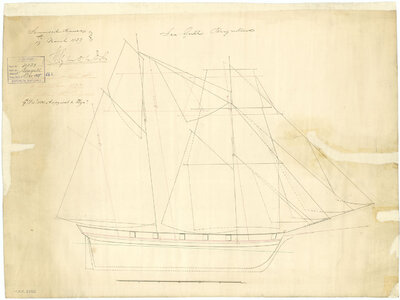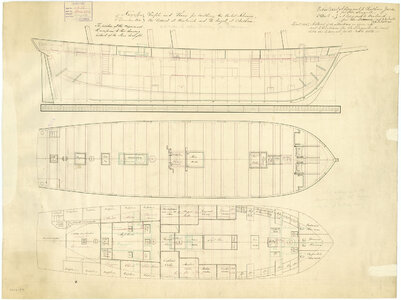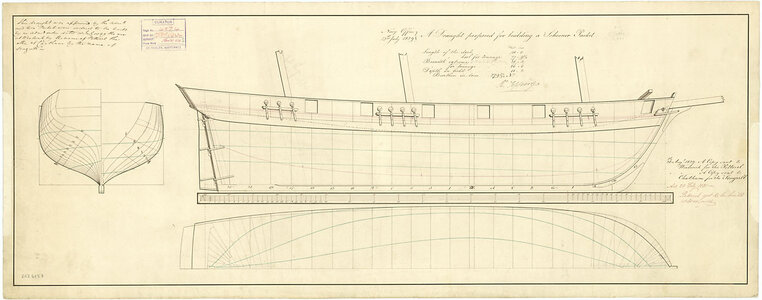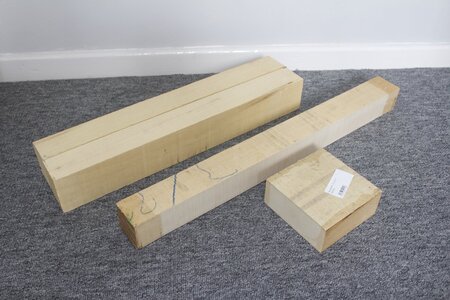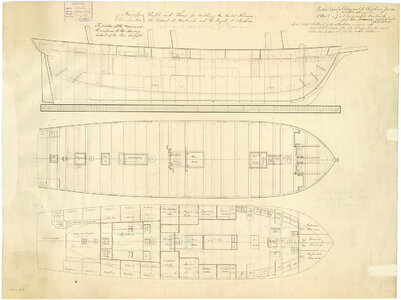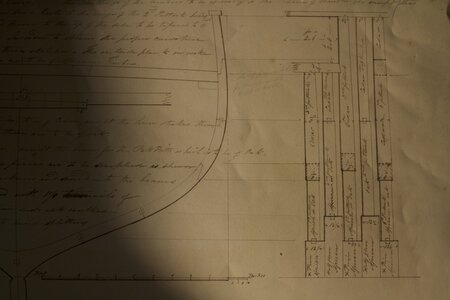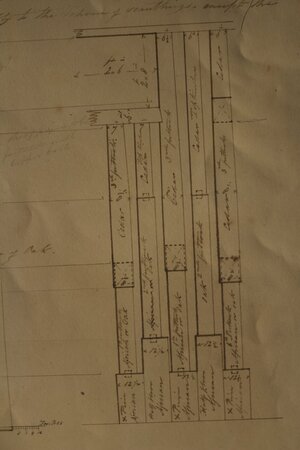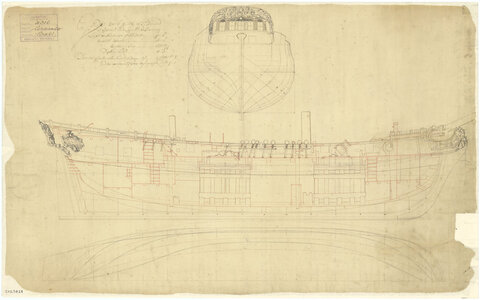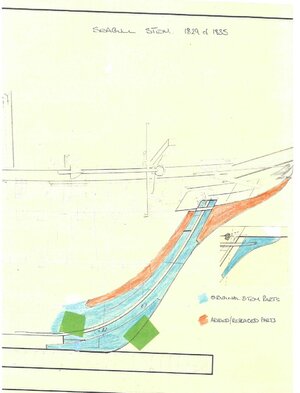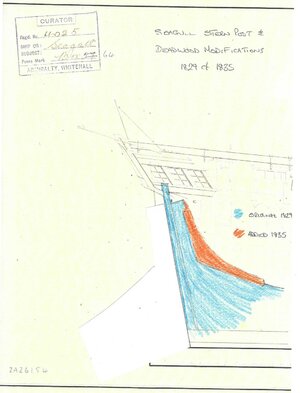- Joined
- Jul 12, 2023
- Messages
- 61
- Points
- 78

Falmouth
I was fortunate to have been in Falmouth many times, you can feel the culture of seafaring history. If you look around at the architecture of residential and commercial property, there is evidence of historical connections to maritime trade. Whilst in Falmouth I visited the National Maritime Museum and was interested by the “Falmouth Packets”. Possibly the definitive work by Tony Pawlyn gives an insight into the origins and history of the Falmouth Packet service.
The Post Office Packet Service was part of the British Royal Mail. As the British empire and trade expanded globally there was a need to to carry personal, commercial and diplomatic letters and dispatches to regions beyond our shores. The "packets" were carried in Packet Boats and whilst there were recorded incidents of carrying only the packet the ships used also transported freight and passengers of the day.
On the 5th October 1661 the small hamlet of Smithwick was chartered and developed into the town of Falmouth with greater rights of self-determination. Falmouth was suitably fortified from earlier times, was a natural shelter and had one of the deepest harbours, allowing ships to sail at any state of the tide. It was also further west allowing vessels safe departure and clearance from the land into the prevailing westerly winds.
However a good water supply and the ability to service the requirements of maritime trade and sailors, the town developed. The government of the day provided support to build quays and quay-side warehousing to hold import and export freight. In 1815 there were a total of 19 lodging houses and 9 hotels to accommodate the travellers passing through Falmouth. The Greenbank Commercial and Packet Royal Hotel (the Greenbank Hotel) and the Navy Tavern, to name two.
The first packet ships travelled to Corunna in Spain, by 1808 there were 39 routes to Canada, North and South America, the Caribbean Islands and the Mediterranean.
The Packet Ships
The Post Office Packet Service began using private vessels, owned by individuals or syndicates, contracted into the service. From c1689 to 1839 some 125 vessels were used (though this number may not be fully accurate, as some names were used by a number of vessels) particularly following losses. From 1823 until 1851, when wooden sailing vessels out of Falmouth ended, the service was controlled by the Admiralty using and estimated 38 vessels.
Having fallen for the notion of modelling a Falmouth Packet Ship, I needed to select which vessel. I contacted the National Maritime Museum at Falmouth. Thanks to their assistance some interesting plans were sent to me, one of which was a “standard” Packet ship design by Marmadulke Stalkart (1750-1805), a celebrated navel architect of the period. I was encouraged by the information, but accessed various articles that mentioned the HMPB Seagull.
Lieutenant John Parsons transferred to Falmouth from West Indies station in 1833 awaiting a posting in the packet service. His first posting was the commander of the packet ship Seagull. A letter from Parsons dated 18th September 1837 read,
“……On the morning of 1st August (1837) the wind increased, and blew a perfect hurricane for about 4 hours, where it moderated a little, and veered to the south west, which enabled us to bend another top-sail. At noon we begun to weigh, and in three hours we were able to make sail off the reef, the Bahama Bank.” As a result of his actions it was judged he most probably saved the vessel and the crew.
Parsons remained in command of the Seagull until 15th March 1842. He purportedly went on half-pay awaiting his next commend, as was practice at that time. However records show he took command again for a short period that was recorded in the West Briton newspaper dated 23rd April 1847:-
“ THE QUICKEST VOYAGE EVER MADE TO RIO DE JANEIRO FROM FALMOUTH - Her Majesty’s packet brigantine “Seagull” , under the command of Lieut. J. Parsons, sailed from Falmouth on the 6th December last (1846 )” and via Madeira, Teneriffe, and across the Atlantic to Pernambuco, Bahia and “Rio De Janerio, arriving on the morning of the 13th January“ (1847). The voyage I estimate to be about 4,900 nautical miles and it took 37 days, 21 hours. “This is considered to be the shortest voyage out to Rio Janario ever performed by any packet in her Majesty’s service, touching at the northern ports”
Parsons went on to command another ship, HM Crane and Command of the Seagull passed to Lt. Henry Percy Dicken on the 8th April 1845. There appears to be some confusion and contradiction as to who commanded the record breaking run accounts differ. Command was with Henry Percy Dicken, but records show John Parsons commanded the voyage, however Lt. James Swale is reported to have made a voyage to the same destination also on the 6th December, though the year was noted. Swale assumed command on the 21st March 1848 which post dated the record achievement. Further research is possible into the history of the Seagull’s commanders.
“Towards the end of 1850 the packet station at Falmouth was in the final stages of being wound up. The West India steamers had at last secured the South American contract, and the last but one of the sailing packets were all at sea on their final voyages. On the 6th December the HM Brig Seagull, under the command of Lt. Smale, sailed for Brazil. She carried no passengers, but had freight of £40,000.” This would be c£5.2 million today. From the Royal Cornwall Gazette 2nd May 1851:
“On Wednesday morning the Seagull, Lieut Smale, arrived from Rio de Janeiro, 47 days passage. She bought only a small parcel of letters, and but three packets of diamonds as freight; Passengers - Miss Lucy and Miss Mary Weitman, Master Le Febre, Mrs Fowler and three children, and Mr Manuel. The Tay steamer, having left Rio subsequently, her advices having been some days anticipated. This is the last vessel on this station as a packet, and with her this old and valuable station ceases to be the starting port of her Majesty’s mails, at least for the present.”
An interesting vessel had been identified. The Seagull. Her history is outstanding:-
An internet search revealed eight ships of the Royal Navy that have borne the name HMS Seagull or HMS Sea Gull. Excluding modern day vessels (1909 to the current time) the remaining vessels were dated 1795, a 16 gun brig-sloop lost in the English Channel in February 1808. 1805 a 16 gun Seagull Class brig-sloop that was captured by the Danes in 1808 that sunk and was recovered and saw service again in the Norwegian Navy. A French sloop, the Sylphe was captured by the Royal Navy in 1808 and named HMS Seagull and was later sold in 1814. HMS Seagull (1831) was a 12 gun schooner broken up in 1856. HMS Seagull (1855) was an Albacore Class wooden gunboat sold in 1864 and finally HMS Seagull 1868 and Plover Class gunboat sold in 1887.
Contact was then made with the Royal Maritime Museum Greenwich and a search conducted on the available data base. Documents and planes relating to a number of vessels were identified. One made reference to a specific Packet design, a 6 gun Schooner that was to be constructed at Chatham and Woolwich Dockyeads. These were to be named the Seagull and Petterel. In the event the Petterel construction was cancelled.
The Naval Database as well as the Chatham Dockyard records confirm that HMPB Seagull was launched at Chatham Dockyard on the 21st November 1831. She was a 6 gunned Schooner of 279 tons. Further more she returned to Chatham in 1834 for a conversion from the 3 masted schooner as built into a 2 masted brigantine. The reason for this is unclear but packet boats were very lightly armed and speed and reduced size crew were main driving forces at that time. The vessel was eventually disposed on in 1852.
Other searches revealed a painting of The Packet Seagull by Nicholas Condy the Younger (1816-1851).
In short, over the last 3 months, with the assistance of a group supportive experts I had sourced some relevant history on Falmouth the packet ships and furthermore had identified the Seagull with an inspirational pedigree. Detailed sketches and plans dated 1829 to 1832 have been obtained that would allow construction of a model to commence.
Where do we go from here?
I was fortunate to have been in Falmouth many times, you can feel the culture of seafaring history. If you look around at the architecture of residential and commercial property, there is evidence of historical connections to maritime trade. Whilst in Falmouth I visited the National Maritime Museum and was interested by the “Falmouth Packets”. Possibly the definitive work by Tony Pawlyn gives an insight into the origins and history of the Falmouth Packet service.
The Post Office Packet Service was part of the British Royal Mail. As the British empire and trade expanded globally there was a need to to carry personal, commercial and diplomatic letters and dispatches to regions beyond our shores. The "packets" were carried in Packet Boats and whilst there were recorded incidents of carrying only the packet the ships used also transported freight and passengers of the day.
On the 5th October 1661 the small hamlet of Smithwick was chartered and developed into the town of Falmouth with greater rights of self-determination. Falmouth was suitably fortified from earlier times, was a natural shelter and had one of the deepest harbours, allowing ships to sail at any state of the tide. It was also further west allowing vessels safe departure and clearance from the land into the prevailing westerly winds.
However a good water supply and the ability to service the requirements of maritime trade and sailors, the town developed. The government of the day provided support to build quays and quay-side warehousing to hold import and export freight. In 1815 there were a total of 19 lodging houses and 9 hotels to accommodate the travellers passing through Falmouth. The Greenbank Commercial and Packet Royal Hotel (the Greenbank Hotel) and the Navy Tavern, to name two.
The first packet ships travelled to Corunna in Spain, by 1808 there were 39 routes to Canada, North and South America, the Caribbean Islands and the Mediterranean.
The Packet Ships
The Post Office Packet Service began using private vessels, owned by individuals or syndicates, contracted into the service. From c1689 to 1839 some 125 vessels were used (though this number may not be fully accurate, as some names were used by a number of vessels) particularly following losses. From 1823 until 1851, when wooden sailing vessels out of Falmouth ended, the service was controlled by the Admiralty using and estimated 38 vessels.
Having fallen for the notion of modelling a Falmouth Packet Ship, I needed to select which vessel. I contacted the National Maritime Museum at Falmouth. Thanks to their assistance some interesting plans were sent to me, one of which was a “standard” Packet ship design by Marmadulke Stalkart (1750-1805), a celebrated navel architect of the period. I was encouraged by the information, but accessed various articles that mentioned the HMPB Seagull.
Lieutenant John Parsons transferred to Falmouth from West Indies station in 1833 awaiting a posting in the packet service. His first posting was the commander of the packet ship Seagull. A letter from Parsons dated 18th September 1837 read,
“……On the morning of 1st August (1837) the wind increased, and blew a perfect hurricane for about 4 hours, where it moderated a little, and veered to the south west, which enabled us to bend another top-sail. At noon we begun to weigh, and in three hours we were able to make sail off the reef, the Bahama Bank.” As a result of his actions it was judged he most probably saved the vessel and the crew.
Parsons remained in command of the Seagull until 15th March 1842. He purportedly went on half-pay awaiting his next commend, as was practice at that time. However records show he took command again for a short period that was recorded in the West Briton newspaper dated 23rd April 1847:-
“ THE QUICKEST VOYAGE EVER MADE TO RIO DE JANEIRO FROM FALMOUTH - Her Majesty’s packet brigantine “Seagull” , under the command of Lieut. J. Parsons, sailed from Falmouth on the 6th December last (1846 )” and via Madeira, Teneriffe, and across the Atlantic to Pernambuco, Bahia and “Rio De Janerio, arriving on the morning of the 13th January“ (1847). The voyage I estimate to be about 4,900 nautical miles and it took 37 days, 21 hours. “This is considered to be the shortest voyage out to Rio Janario ever performed by any packet in her Majesty’s service, touching at the northern ports”
Parsons went on to command another ship, HM Crane and Command of the Seagull passed to Lt. Henry Percy Dicken on the 8th April 1845. There appears to be some confusion and contradiction as to who commanded the record breaking run accounts differ. Command was with Henry Percy Dicken, but records show John Parsons commanded the voyage, however Lt. James Swale is reported to have made a voyage to the same destination also on the 6th December, though the year was noted. Swale assumed command on the 21st March 1848 which post dated the record achievement. Further research is possible into the history of the Seagull’s commanders.
“Towards the end of 1850 the packet station at Falmouth was in the final stages of being wound up. The West India steamers had at last secured the South American contract, and the last but one of the sailing packets were all at sea on their final voyages. On the 6th December the HM Brig Seagull, under the command of Lt. Smale, sailed for Brazil. She carried no passengers, but had freight of £40,000.” This would be c£5.2 million today. From the Royal Cornwall Gazette 2nd May 1851:
“On Wednesday morning the Seagull, Lieut Smale, arrived from Rio de Janeiro, 47 days passage. She bought only a small parcel of letters, and but three packets of diamonds as freight; Passengers - Miss Lucy and Miss Mary Weitman, Master Le Febre, Mrs Fowler and three children, and Mr Manuel. The Tay steamer, having left Rio subsequently, her advices having been some days anticipated. This is the last vessel on this station as a packet, and with her this old and valuable station ceases to be the starting port of her Majesty’s mails, at least for the present.”
An interesting vessel had been identified. The Seagull. Her history is outstanding:-
- Survived a Hurricane.
- May have undergone a conversion in mast and rigging arrangement.
- Made a record breaking trans-Atlantic run.
- Was the last sailing Packet ship to return to Falmouth.
An internet search revealed eight ships of the Royal Navy that have borne the name HMS Seagull or HMS Sea Gull. Excluding modern day vessels (1909 to the current time) the remaining vessels were dated 1795, a 16 gun brig-sloop lost in the English Channel in February 1808. 1805 a 16 gun Seagull Class brig-sloop that was captured by the Danes in 1808 that sunk and was recovered and saw service again in the Norwegian Navy. A French sloop, the Sylphe was captured by the Royal Navy in 1808 and named HMS Seagull and was later sold in 1814. HMS Seagull (1831) was a 12 gun schooner broken up in 1856. HMS Seagull (1855) was an Albacore Class wooden gunboat sold in 1864 and finally HMS Seagull 1868 and Plover Class gunboat sold in 1887.
Contact was then made with the Royal Maritime Museum Greenwich and a search conducted on the available data base. Documents and planes relating to a number of vessels were identified. One made reference to a specific Packet design, a 6 gun Schooner that was to be constructed at Chatham and Woolwich Dockyeads. These were to be named the Seagull and Petterel. In the event the Petterel construction was cancelled.
The Naval Database as well as the Chatham Dockyard records confirm that HMPB Seagull was launched at Chatham Dockyard on the 21st November 1831. She was a 6 gunned Schooner of 279 tons. Further more she returned to Chatham in 1834 for a conversion from the 3 masted schooner as built into a 2 masted brigantine. The reason for this is unclear but packet boats were very lightly armed and speed and reduced size crew were main driving forces at that time. The vessel was eventually disposed on in 1852.
Other searches revealed a painting of The Packet Seagull by Nicholas Condy the Younger (1816-1851).
In short, over the last 3 months, with the assistance of a group supportive experts I had sourced some relevant history on Falmouth the packet ships and furthermore had identified the Seagull with an inspirational pedigree. Detailed sketches and plans dated 1829 to 1832 have been obtained that would allow construction of a model to commence.
Where do we go from here?
Last edited:



